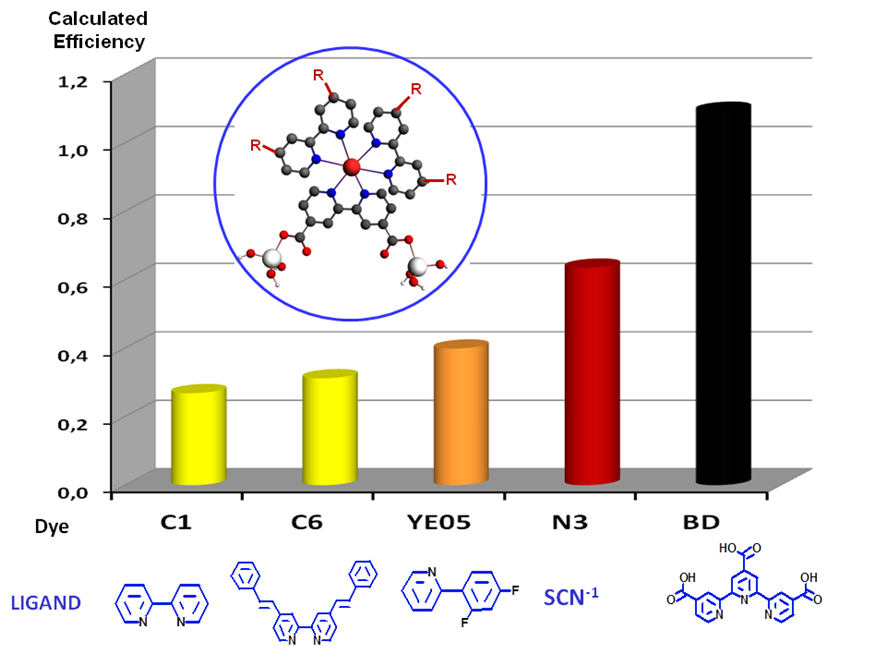Efficiency of Ru dyes in DSSCs
The performance of seven ruthenium dyes in DSSC devices was predicted employing a molecular model were the dye is linked to two Ti(OH)3 units.
The theoretical efficiency of the dyes is determined by three factors: 1) the amount of absorbed energy delivered to the anchor group, 2) the charge injected into the LUMO of the Ti(OH)3 group (modeling the semiconductor surface), and 3) the reduction of the oxidized dye by triiodide.
A number of strong ADF features were used in this study: molecular orbital decomposition in terms of fragment components, the SAOP model exchange correlation potential with correct long range decay behavior, and fractional occupations numbers to calculate the chemical hardness of the ligands.

Ruthenium dyes with black dye (BD), or N749, ligands are more efficient than N3. This is mainly due to a more effective localization of the 3MLCT excited state on the ligands thethered to the semi-conductor.
M. Barrera, I. Crivelli, and B. Loeb, On the performance of ruthenium dyes in dye sensitized solar cells: a free cluster approach based on theoretical indexes, J Mol. Model 22, 118 (2016).
Key conceptsADF bonding analysis DSSCs organic electronics TDDFT